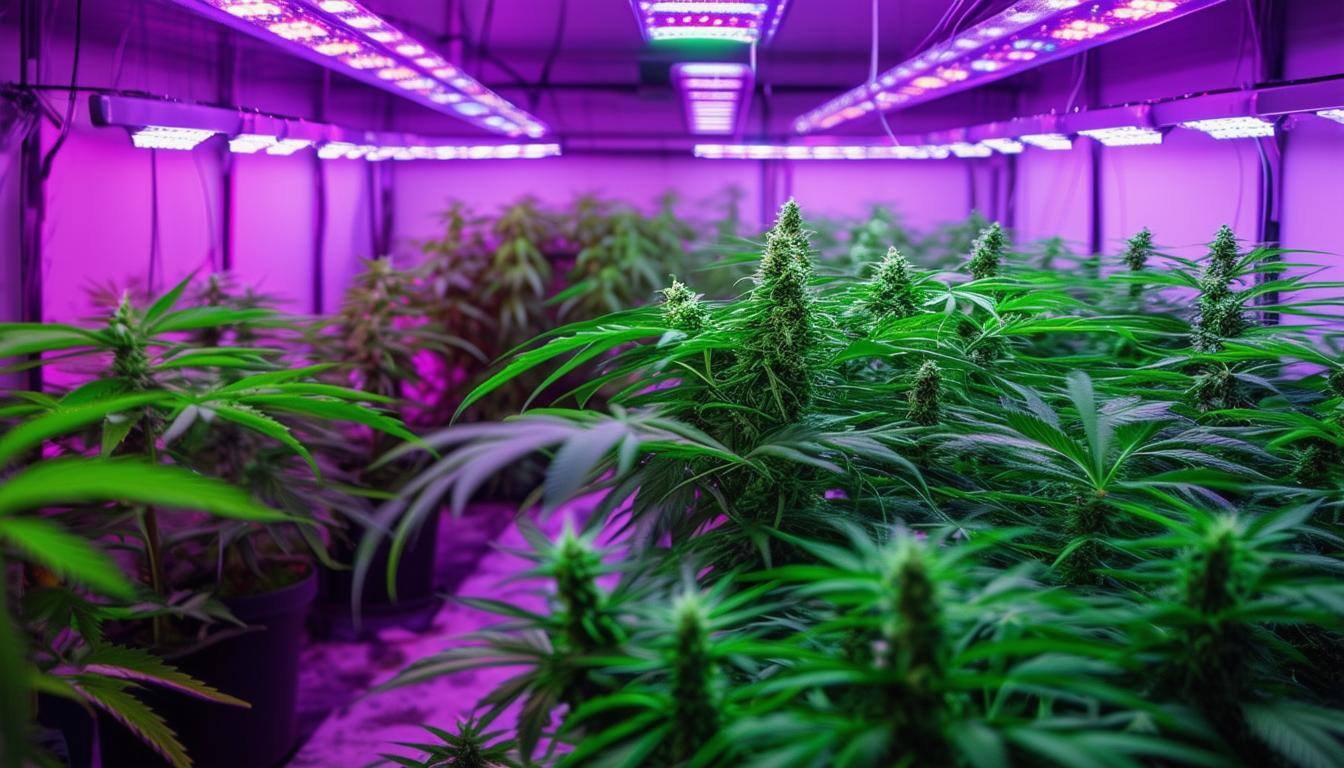Essential tips for the future indoor cultivator to make every day a perfect day indoors
Setting up the Ideal Indoor Environment
When it comes to growing cannabis indoors, setting up the ideal indoor environment is crucial. Creating the perfect conditions for your plants will ensure their healthy growth, avoid pests and disease, and maximize your yield. Here are some key factors to consider:
- Temperature: Maintaining a consistent temperature is important for the overall health of your plants. Most cannabis strains thrive in temperatures between 70-85°F (20-30°C). Using a thermostat and a heater or air conditioner can help you regulate the temperature.
- Humidity: Cannabis plants require different humidity levels during different stages of their growth. Generally, a humidity level of around 40-60% is suitable for most stages. However, during the flowering stage, it's best to lower the humidity to prevent mold and mildew.
- Air Circulation: Proper airflow is essential for preventing stagnant air and the development of pests and diseases. Optimizing the use of fans and ventilation systems ensures good air circulation.
- Odor Control: Cannabis plants can produce strong odors, especially during the flowering stage. Investing in a carbon filter and air purification can help control the smell and keep your neighbors from complaining at the next community planning meeting!
By carefully planning and setting up the ideal indoor environment, you can create the perfect conditions for your cannabis plants to thrive.
Right Light and Nutrients
Providing the right light and nutrients is essential for the healthy growth of your indoor cannabis plants. Here are some tips to ensure you're giving your plants what they need:
- Light: Cannabis plants require a specific light spectrum for optimal growth. During the vegetative stage, they need a light spectrum that is rich in blue light. For the flowering stage, a light spectrum rich in red and orange light is necessary. Consider using LED grow lights as they are energy-efficient and can provide the right spectrum.
- Nutrients: Cannabis plants have different nutrient requirements during different stages of growth. Using a high-quality fertilizer specifically formulated for cannabis can help ensure your plants receive the right balance of nutrients. Pay attention to the N-P-K ratio (nitrogen, phosphorus, and potassium) and follow the recommended dosage.
- Under Canopy Lights: This is a newer technique. Under-canopy lighting refers to a strategic method where additional light sources are placed below the main canopy level to ensure lower branches and leaves receive sufficient light. This technique aims to penetrate dense foliage, promoting even growth and increasing yield by improving light exposure to all parts of the plant.
By providing your cannabis plants with the right light and nutrients, you can promote healthy growth and maximize their potential.
Proper Ventilation and Air Circulation
Proper ventilation and air circulation are vital for maintaining a healthy indoor cannabis garden. Here's why it's important and how you can achieve it:
- Preventing Mold and Mildew: Good air circulation helps prevent the development of mold and mildew, which can be detrimental to your plants' health. Stagnant air increases the risk of these issues, so using fans or ventilation systems to create a gentle breeze is recommended.
- Strengthening Stems: Adequate airflow helps strengthen the stems of your cannabis plants, making them more resistant to breakage and supporting their overall structure.
- Reducing Heat Stress: Proper ventilation helps regulate the temperature in your grow space, preventing heat stress. This is especially important during hot summer months or if you're using high-intensity lights.
- Controlling Odors: Proper air circulation can help control the strong odors that cannabis plants emit, providing a more discreet growing environment.
To achieve proper ventilation and air circulation, consider using oscillating fans, exhaust fans, and intake vents. Monitor the temperature and humidity levels regularly and adjust the airflow accordingly.
IPM - Maintaining Pest and Disease Control
Integrated Pest Management (IPM) is crucial for preventing and managing pests and diseases in your indoor cannabis garden. Here are some key practices to incorporate into your IPM strategy:
- Regular Inspections: Regularly inspect your plants for any signs of pests or diseases. Look for pests like spider mites, aphids, or whiteflies, as well as symptoms of common diseases such as powdery mildew or bud rot.
- Biological Control: Implement biological control methods such as introducing beneficial insects like ladybugs or predatory mites to control pests naturally. This can help reduce the need for chemical pesticides.
- Proper Sanitation: Maintain a clean growing environment by regularly cleaning your grow space, tools, and equipment. Remove any dead plant material or fallen leaves, as they can attract pests and harbor diseases.
- Quarantine: When introducing new plants or clones to your indoor garden, quarantine them for a period of time to ensure they are pest and disease-free before placing them with your other plants.
By implementing these IPM practices, you can minimize the risk of pests and diseases and maintain a healthy and thriving indoor cannabis garden.
Summary
Creating an optimal indoor cannabis environment requires careful management of temperature, humidity, air circulation, and odor control to ensure plant health and maximize yield. Optimal temperature and humidity levels prevent stress and disease, while effective air circulation and odor management maintain a healthy grow space. Lighting and nutrients are essential, with specific requirements for different growth stages and the addition of under-canopy lighting to ensure even light exposure. Proper ventilation is crucial for temperature regulation and air quality, supporting strong plant growth. Integrated Pest Management (IPM) practices, including inspections, biological control, and sanitation, protect against pests and diseases. By integrating these environmental and management strategies, cultivators can enhance their indoor gardens, leading to healthier plants and more bountiful harvests.

Comments